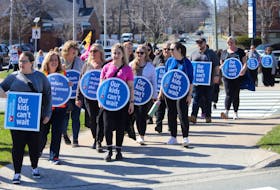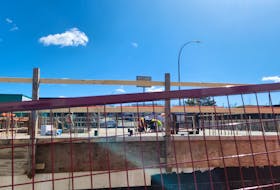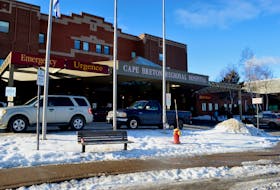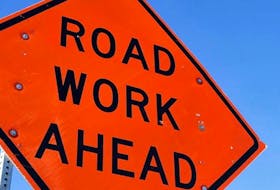The federal government is expected to apologize on Sunday for systemic racism experienced by members of the No. 2 Construction Battalion, an all-Black unit that served in the First World War.
Sylvia Parris-Drummond's father Joseph Parris served in the battalion, and was one of the men featured on a Canadian stamp unveiled in 2019 honoring them.
The CEO of the Delmore Buddy Daye Learning Institute was cautiously optimistic about Sunday's event, which is being held virtually and livestreamed through the Department of National Defence Facebook site.
“I feel like there's a caveat because we haven't seen the apology or heard it,” Parris-Drummond said on Friday.
“What I would say, certainly in big picture, the recognition of the racism – the anti-Black racism – and the recognition of the contribution of the Black Battalion to Canada, I look forward to hearing the minister express that.”
Central Nova MP Sean Fraser will preside over the ceremony. Speakers will include Defence Minister Harjit S. Sajjan; Anita Vandenbeld, parliamentary secretary for national defence; Darrell Samson, parliamentary secretary to the minister of veterans affairs; and Greg Fergus, parliamentary secretary to the prime minister, to the president of the Treasury Board, and to the minister of digital government, according to a news release. Invitees include members of the Black Battalion Historical Marker Society, members of The Black Cultural Society, and descendants of those who served in the No. 2 Construction Battalion.
It starts at 2 p.m. Atlantic time.

“I hope what we hear in this apology, as well, is kind of a response to a 'so, what' – so we're going to apologize and then what's going to come out of that” as far as system change,” Parris-Drummond said.
“I'll be listening for that, as well.”
She said that's important in all apologies for historic actions of this level but particularly in this case because the movement to form the Black Battalion was about actions all along the way. Black men were saying they want to fight for their families and for their communities. And they wanted to be seen as contributing Canadians.
“Activism was in every action taken,” Parris-Drummond said.
Ken Hynes, curator of the Army Museum Halifax Citadel, pointed out that the battalion was formed in 1916, when Black men who wanted to fight were prevented from doing so because of their colour.
“At that time, as you can imagine, there was a significant amount of institutional racism and racism at large, I suppose, in society,” Hynes said on Friday. “And as a result of that, Black men had a difficult time volunteering for service in the Canadian Expeditionary Force.”
A decision was made to form a segregated construction battalion. They would serve through cutting lumber and as builders.

The 600-strong battalion had about 300 men from Nova Scotia and another 300 from across Canada, the United States and the British West Indies, according to the Black Cultural Centre for Nova Scotia (https://www.bccnsweb.com/web/no-2-construction-battalion-stamp-unveiling/).
“They spent the majority of the war in the Jura Mountains in France doing logging operations and felling heavy timbers that were necessary for the construction of the trenches on the front lines,” Hynes said. “So the work they did was extremely valuable, important work, and the circumstances were fairly difficult ones.”
Parris-Drummond said her father Joseph never shared his memories of his service in the battalion with her. Her parents died when she was in her teens and she learned of the history of the No. 2 Construction Battalion outside the home.
“I've often said – unfortunately been able to say – if that had have been available in the public school system, wouldn't it (have) been wonderful for me to go home and talk to my father about it, but there wasn't that chance.”
The online ceremony has the potential for the government to show up strongly in recognition of things that need to be redressed, she said,
“I hope there's a chance, too, to recognize not just the battalion men like my dad, but then also the families who are still here, still dealing with discrimination, still dealing with the logistics or practicality of raising children, economics and their family.”
Hynes said there were about 2,000 other Black soldiers who served in front-line combat units with the Canadian Expeditionary Force during the war.
“Many, many of whom were decorated for gallantry,” he said. “And, in addition to No. 2 Construction Battalion, those soldiers served quite bravely, the same as any other soldier during the First World War.
“It's clear that there was rampant discrimination that existed at the time, and I think that after all the intervening years, it's overdue. It's the right thing to do to apologize to the descendants of those soldiers who really did suffer discrimination over 100 years ago. And I think the government is to be congratulated for doing that. And it's really high time that it be done.”








